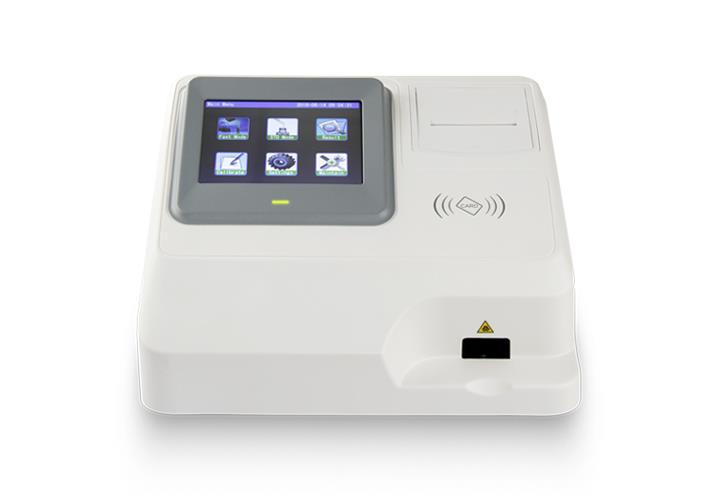Advancements in Immunofluorescence Analyzer Technology

Immunofluorescence analyzer technology has significantly improved throughout time, resulting in findings that are more accurate and reliable and require less time and effort to analyse.
The adoption of automated immunofluorescence analyzer systems, which eliminate the need for human preparation and analysis, minimising mistakes and boosting efficiency, is one noteworthy development. These systems are perfect for high-throughput diagnostic testing since they can handle several samples at once.
Multiplex immunofluorescence analysis, which permits the simultaneous detection of numerous targets in a single sample, is another noteworthy discovery. Through the use of many fluorescent dyes that bind to certain targets, this method enables the identification and measurement of numerous biomarkers in a single assay. In cancer research, multiplex immunofluorescence analysis is very helpful in identifying cancer subtypes and creating individualised therapy regimens.
Another important development in immunofluorescence analysis is the use of digital pathology. This technique eliminates the need for physical slides and human examination by allowing digital scanning and analysis of tissue samples. Clinical staff can access and examine samples from far-off places thanks to digital pathology, which is especially beneficial in telemedicine and remote diagnostics.
The application of artificial intelligence (AI) to immunofluorescence analysis has completely changed the field, increasing the precision and dependability of findings while requiring less time and effort. In order to build individualised treatment plans and identify small changes in samples, AI systems can analyse enormous quantities of data fast and reliably.
- Art
- Causes
- Crafts
- Dance
- Drinks
- Film
- Fitness
- Food
- Jeux
- Gardening
- Health
- Domicile
- Literature
- Music
- Networking
- Autre
- Party
- Religion
- Shopping
- Sports
- Theater
- Wellness
- IT, Cloud, Software and Technology


